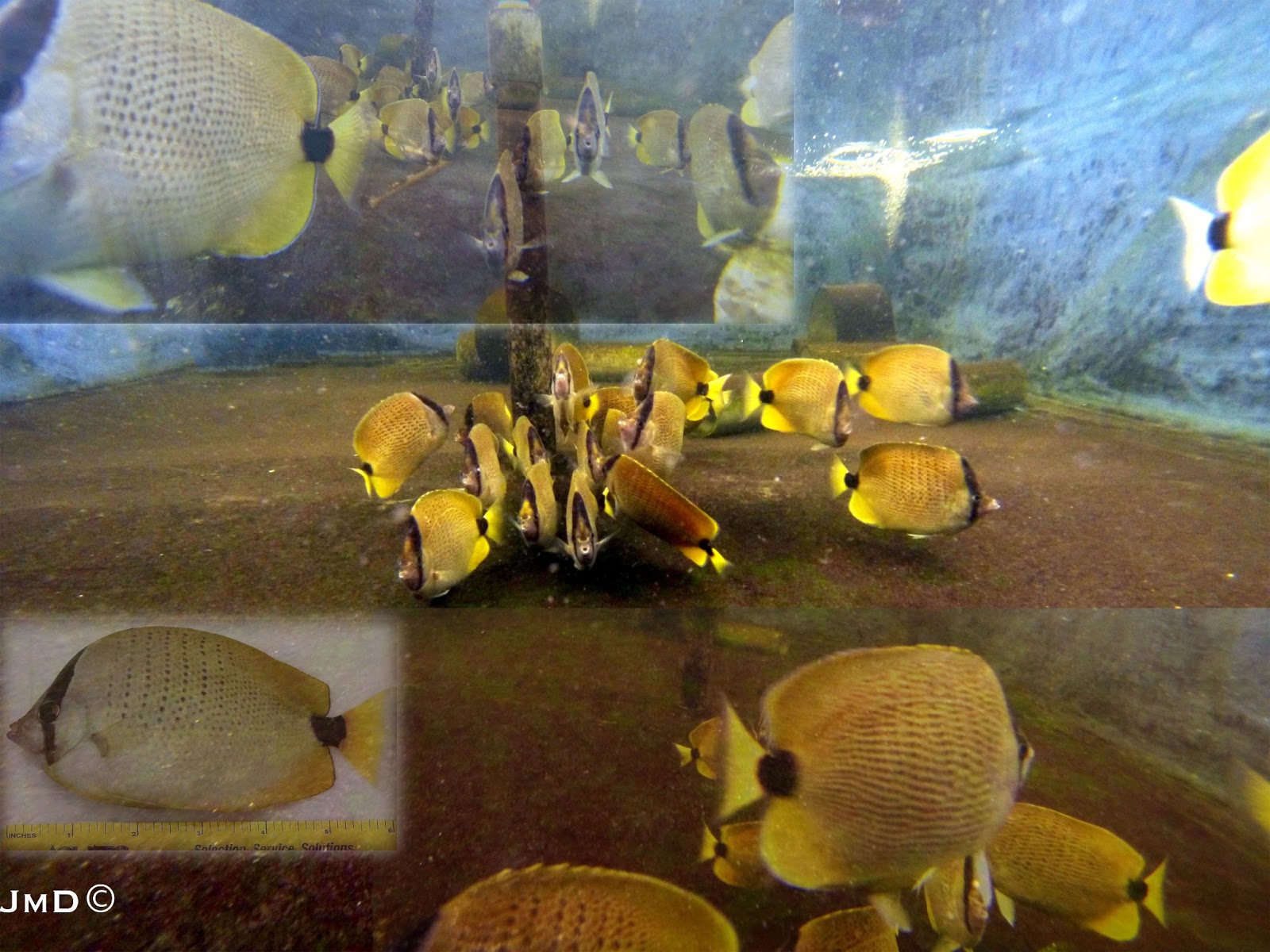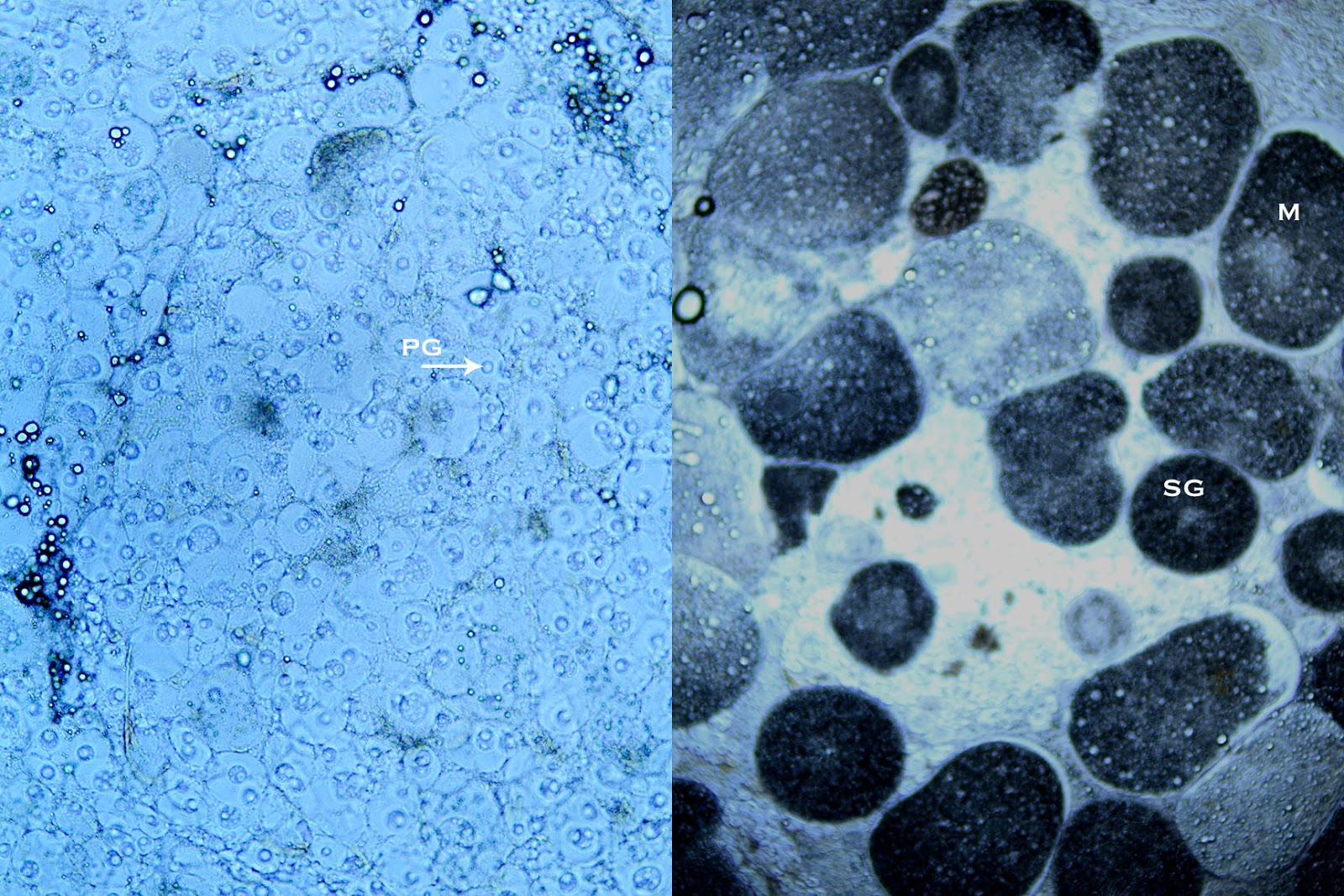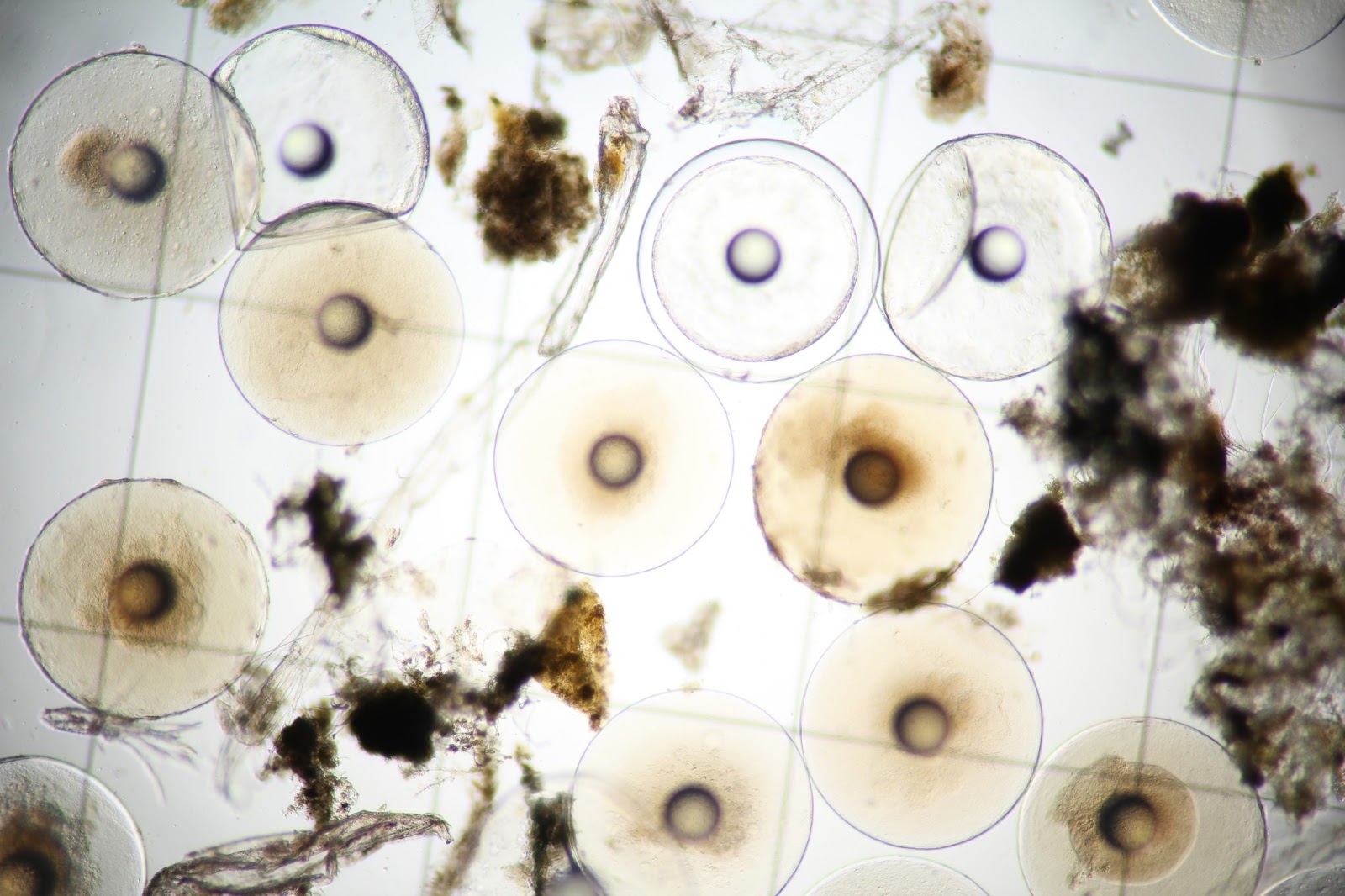At least one Sr. Editor at CORAL is grinding his teeth in the most envious fashion while reading this latest update from Rising Tide! We’re excited to share this update from the team out of University of Florida’s Tropical Aquaculture Laboratory. Keep up the great work!
Milletseed Butterflyfish update
Story by Rising Tide Conservation, republished with permission.

Milletseed Butterflyfish Broodstock, Chaetodon miliaris, at University of Florida’s Tropical Aquaculture Laboratory
Working with Milletseed Butterfly’s (Chaetodon miliaris) has presented some unique challenges. After experiencing some issues during shipping and quarantine, we made some changes, and have a batch of 23 healthy, vibrant fish from Disney’s Rainbow reef, in Hawaii. The fish are eating very well and spawned twice during quarantine. However, due to the chemicals in the water during quarantine, the eggs were not viable. This gives us hope that we will soon have viable eggs to start working with since the fish are out of quarantine and the water free from chemicals. Eggs are approximately 710 microns in diameter, with a central oil globule. Fertilized eggs will float on the waters surface and are skimmed off the surface with egg collectors in the tank.
We canulated the broodstock in an effort to determine what sex ratio and stage of maturity was present in our population. The results were quite shocking. Out of 19 fish that were cannulated only 1 was male. Shouldn’t he be in heaven! Having already spawned we do not think that this will be a major issue, however it may limit fecundity of the group. Our goal is to gather several more males and introduce them to the population.

Oocyte samples taken by canulation of female Milletseed Butterflies. Left shows primary growth oocyts. Right shows mature oocytes.
Jon-Michael Degidio
Tropical Aquaculture Laboratory
University of Florida
Source: Rising Tide Conservation Updates
All images courtesy Rising Tide / JMD






I am curious as to why the U of F Tampa Bay Florida facility chose to work with a Pacific butterflyfish species in a facility where related Florida/Caribbean species (Reef butterflyfish Chaetodon sedentarius) is readily available in adjacent waters.
It would be ideal to be working with a species which was located closer to our laboratory here in Tampa, however we chose the Milletseed or Lemon butterfly for several reasons:
1) It represents one of the largest groups traded within the marine ornamental trade.
2) Hawaii’s push to eliminate wild harvest from its reefs has created a need to bring endemic species from the region into culture before they can no longer be collected for the trade.
3) A list of species was chosen for the Rising Tide Initiative and it was determined to be one of the most ascertainable species listed.
4) The traits of the this butterfly bode very well for reef aquariums as its wild diet is mainly zooplankton and in captivity it can be feed a wide variety of feeds such as mysid shrimp.
Thank you for your question.
Jon-Michael